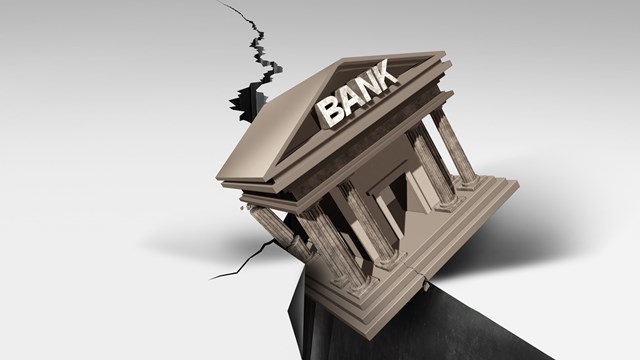Every year, co-ops and condos spend serious time and energy compiling their operating budgets. The process can start as early as September, with an evaluation of the first eight months of expenses for the past year–the primary purpose of which is to investigate unexpected variances from the prior budget and to determine if they will re-occur. In the end, it’s still more than likely that the new budget will mirror the old, albeit with some small adjustments or across the board percentage increase. After that, maintenance charges will be set, the philosophy typically being that maintenance charges should equal expenses. This is where most buildings stop.
Unfortunately, this stops short of what can be the most important and expensive expenditures a building generally faces every year: major repairs and replacements. While a building’s reserve fund is established to fund such projects, most sponsors only fund the required legal minimum of three percent–hardly enough to satisfy the long-term needs of the building without any future contributions. Many owners do not fully appreciate the financial imbalance that exists between the future needs of the building and the balance of the fund. Fortunately, this is changing. Prospective purchasers have begun asking to review meeting minutes, and in some instances even hiring engineers to perform basic building evaluations before choosing a building.
Seeing the Big Picture
The entire premise of common ownership puts co-ops and condos in the not-for profit industry, along with charities, schools, and governmental entities. With no profits to re-invest in real property and equipment, these entities must plan for the inevitable need for major repairs and replacements to their real property. Residential buildings require even more foresight–these units are people’s homes, and represent their single largest asset. Many owners rely on this asset and expect it to appreciate over time. Given that, the life span of a common-interest entity must be considered perpetual: Its sole purpose is to maintain the property.
By initiating long-term capital budget planning, your building can achieve long-term financial independence. It only takes one forward-thinking board member to recommend such a plan and eliminate the need to endlessly rely on increasing debt to fund major repairs.
Every building develops its own sense of community and personality. Many financial-planning professionals believe that current residents should be charged their proportionate share for use of the components of the building so future residents are not required to foot the bill for major repairs in the future. This is accomplished by establishing a program of collecting a designated amount for future major repairs and replacements. With proper planning, you can even designate and utilize other sources of funding. Real estate tax credits granted by the New York City J-51 Abatement program can be returned to the reserve fund as funding for other projects. A long-term capital budget calculates when major repairs and replacements will be required based upon the estimated useful lives of the building’s components. It then projects the cash flow available from the reserve fund to fund these projects, including what additional contributions will need to be made each year. The reserve fund balances may fluctuate widely, but should be timed to meet those needs.
Nuts and Bolts
Without information on the costs involved for major repairs and replacements, as well as the timing of when these projects are expected to be required, it’s only possible to speak in general terms and focus on what would be an adequate minimum reserve fund balance. However, a building itself can determine this amount by referring to a properly compiled long-term capital budget.
The sidebar to this article provides a checklist of tasks necessary to compile a preliminary long-term budget. As the name implies, this budget is an estimate of future circumstances and an ongoing long-term process. While there is no reason why you shouldn’t start the preparation process or even see it through, your best results will probably be achieved by utilizing a team of professionals that includes the building’s engineer, managing agent, contractors, and an accountant. The building needs to provide a quarterback for this team to seek out the necessary information and coordinate the group’s efforts. Such talent can come from within, or by working in concert with a financial planning professional familiar with formulating these plans.
Unfortunately, after compiling the preliminary information, most buildings find that they have not accumulated adequate funding to replace any of the building’s major components. Furthermore, many also do not have a sufficient provision in their operating budgets to fund the annual usage of the components, which is necessary if there are to be sufficient funds available when replacement is finally necessary. Nevertheless, it’s better that a building be informed of these issues and begin taking steps to avoid resorting to assessments and/or increasing debt whenever capital financing is required. Some buildings will be pleasantly surprised to find that they are in a reasonably good position to accomplish the major projects they have on the horizon, and if they initiate a long-term capital budgeting plan, they can stay that way and be able to address projects years in advance. Just as with saving for a college education, the earlier you start, the better.
Hunting for Spare Change
With all of the savings on mortgage payments that buildings have been enjoying through refinancing at historically low interest rates, many actually have operating budget surpluses. If your building has not investigated the refinancing of its mortgage during the last year or so, it is possible to achieve significant savings even after paying a hefty pre-payment penalty. The most important step in embarking on the road to long-term financial independence is including an annual provision in the operating budget for future major repairs and replacement. Even if you can’t fully fund the annual usage of the building’s components, following the philosophy and commencing funding for the future is an important step. Maybe your building already has a long-forgotten provision that can be expanded. Or does your building have a hidden one in the form of a J-51 tax abatement? This program offers credits against real estate taxes of 50 to 70 percent of the cost of qualifying improvements, usually spread over up to 14 years. The building could choose to utilize the gross real estate taxes in the operating budget (the amount which would be due had the abatement not been granted), and a provision for future major repairs and replacements can be inserted in the budget for the amount of the annual abatement. With this, a significant portion of the amounts already spent can be returned to the reserve fund for future needs.
If a building’s board includes a provision in the operating budget for future major repairs and replacements, distributes a copy of the budget to the owners, and transfers the provision into a segregated fund–such as the reserve fund–the Internal Revenue Service will consider that portion of each owner’s monthly maintenance charges as a contribution of capital. As such, this amount can be added to each unit-owner’s purchase price in determining whether there is a capital gain upon the sale of their unit, and such amounts would not be included in the building’s taxable income. While most people will only need to apply the $250,000 to $500,000 allowable exclusion of gain on the sale of principal residence to offset any gain on sale of our units, the appeal of this benefit should not be overlooked in promoting the concept to unit owners. Additionally, all board members must consider that funding for future major repairs and replacements is not only a prudent action, but part of your fiduciary responsibility.
Before initiating a significant maintenance increase, buildings must consider how their maintenance relates to comparable properties. Generally, lower maintenance means higher prices for unit owners considering selling their units. However, prospective purchasers dread future special assessments and may be wary if maintenance charges appear artificially low. Ten or 15 years ago, prospective purchasers were interested in "location, location, location." Nowadays, its "financials, financials, financials." Consequently, they are being drawn to buildings with long-term capital budgets as a means for buyers to assess whether there is a need and/or a plan for future special assessments. You can obtain comparable monthly maintenance information from a variety of sources, such as real estate agents and your managing agent.
Swinging into Action
You may have your work cut out for you if a significant maintenance increase will be needed to fund the long-term capital budget. The news media routinely publish inflation statistics and owners tend to compare their maintenance increases to this data. Different owners within a building may have divergent goals; older owners tend to resist increases because they may be on fixed incomes, or would rather place the burden on future owners if that is what it takes to keep maintenance down and bolster selling prices. Generally, younger owners are more likely to understand the need for saving for the future and would prefer to see a systematic implementation of a long-term plan. The question may become not "How much should we be setting aside to fund the usage of the building’s components?" but "How much can be collected without pricing the building out of the maintenance market?" A partial provision for the long-term capital budget is better than no provision, but then other avenues of funding such as refinancing and planned special assessments may still be necessary to put your building on course for financial freedom.
Initiation of the long-term planning process–not an instantaneous adoption of a fully funded budget–should be your goal. A five-year engineer report is a good place to start in determining which projects are imminent and which can be planned over the near- to mid-term. You should consider expanding upon the report to include a thumbnail analysis of the remaining expected useful lives of those building components not already addressed. This gets board members involved in the long-term budget process and informs everyone of the building’s present condition. You can be the one who sets the stage for putting the building on the road to financial freedom. n
Mr. Beer is a principal with Manhattan accounting firm Czarnowski & Beer. This is the second article in a two-part series on budget planning.







Leave a Comment